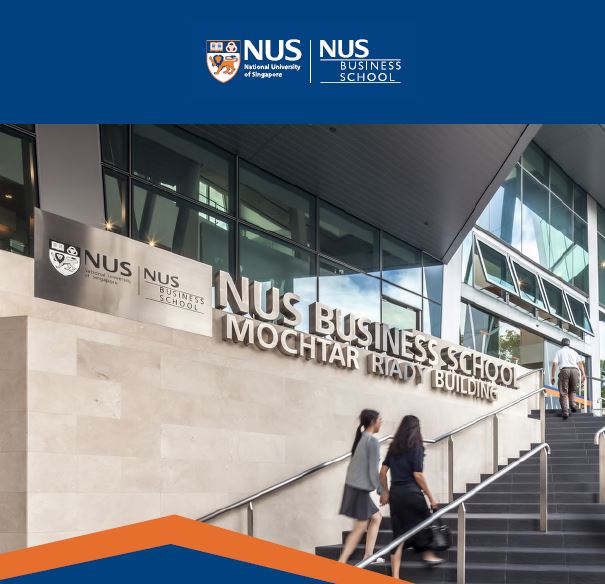NUS HRLP – Strategy in Digital Age

Course Learning Objectives:
- Learn the concepts of business strategy and business models in detail and understand their frameworks and implementation.
- Understand the importance of factoring a digital mindset in the workplace and role of HR in implementing a people strategy in the digital age.
- Learn the concepts of Diversity and Inclusion and the strategies and steps required to infuse this in an organization.
Faculty

Prof Andrew Delios
Vice Dean MSc Programs | Professor, Strategy and Policy Department, NUS Business School
Andrew is an author or co-author of more than 100 published journal articles, case studies and book chapters, as well as an author of six books, including `China 88: The Real China and How to Deal with It. He served as an Associate Editor and General Editor of the UK-based Journal of Management Studies for seven years. He has also been the editor-in-chief for the Asia Pacific Journal of Management and an area editor at the Canadian Journal of Administrative Sciences. From 2011-2013, Andrew served as the President of the Asia Academy of Management. He is currently Vice-President Programs, while he also serves a three-year appointment on the AIB Board. AIB is the leading academic body for scholars of International Business.
Andrew has worked and lived in Asia for 25 years, including three years in Hong Kong and two in Japan. He has also worked in Australia, Canada, China, Finland, India, New Zealand, the Philippines, Sweden, Thailand, the United States and Vietnam. At NUS, he has taught in numerous programs, including the PhD and Executive MBA programs in Singapore, Thailand, India and the Philippines. He was an owner and director in Belgarath Investments Limited, a Singapore-based company that was engaged in international franchising with such brands as Chili’s, Subway and Sarpino’s Pizza.
Syllabus
- Business Strategy and Business Models
- Strategy in the Digital Organization - Talent and Technology
- Strategy in a Diverse and Inclusive Organization (DEI)
Learning Objectives:
- Learn the concepts of business strategy and business models in detail and understand their frameworks and implementation.
Module Components:
Video Lectures:
- Business Strategy and Business Models – 1
- Business Strategy and Business Models – 2
- Business Strategy and Business Models – 3
- Business Strategy and Business Models – 4
- Domino’s Pizza: Greatest Turnaround in Recent Business History
- Domino’s Pizza CEO: Behind the Scene Innovation
- Domino’s Pizza Transformed their Strategy
- How Domino’s is Winning the Pizza Wars
- What is Strategy?
- Creating and Capturing Value
- Ensuring Competitiveness (VRIO Framework)
- Challenges in Delivering Value
- A Framework for Strategy Implementation
- What is a Business Model?
- Understanding the Lean Start Up Principles
- Business Model Development with Lean Startup – I
- Business Model Development with Lean Startup – II
Readings:
- Porter’s Strategy Framework
- Porter’s Five Forces – Strategy Framework
- Aligning Human Resources and Business Strategy
- Business Models – Definition and Types
- Business Models in the Sharing Economy
- Human Resources Models for HR Practitioners
- Designing a Business Model for the Digital Economy
- Case Study: Air Asia: A Second Decade of Exceptional Growth
Quiz:
- Business Strategy and Business Models
Learning Objectives:
- Understand the importance of factoring a digital mindset in the workplace and role of HR in implementing a people strategy in the digital age.
Module Components:
Video Lectures:
- Strategy in the Digital Organization – 1
- Strategy in the Digital Organization – 2
- Strategy in the Digital Organization – 3
- Strategy in the Digital Organization – 4
- Strategy in the Digital Organization – 5
- Strategy in the Digital Organization – 6
- Strategy in the Digital Organization – 7
- Strategy in the Digital Organization – 8
- Digital Workplace Evolution and Challenges
- Factoring Mindset Into the Digital Talent Strategy
- Steps to Reskill Workforce for the Future
- Digital Growth in SE Asia
- Walmart’s Digital Strategy
- A Digital Strategy Framework
Readings:
- The Changing Role of People Management in the Digital Age
- Building the On-Demand Workforce
- Skills Needed for the Digital Future of Work
- What Digital Really Means
- The Best Response to Digital Disruption
- Case Study: Digitalization Strategy at Siemens
Quiz:
- Strategy in the Digital Organization – Talent and Technology
Learning Objectives:
- Learn the concepts of Diversity and Inclusion and the strategies and steps required to infuse this in an organization.
Module Components:
Video Lectures:
- Strategy and DEI – 1
- Strategy and DEI – 2
- Strategy and DEI – 3
- Strategy and DEI – 4
- What is Diversity and Inclusion?
- Strategies to Infuse Diversity and Inclusion in an Organization
- Interview with Naina Lal Kidwai
- Interview with Savannah Maziya
Readings:
- Why is Diversity and Inclusion in the Workplace Important?
- The Diversity and Inclusion Revolution: Eight Powerful Truths
- Steps to Create DEI Roadmap
- Copenhagen Business School’s approach to DEI
- How Men Can be More Inclusive Readers
- McKinsey Global Survey Moving Mindsets on Global Diversity
- How to close the Gender Gap: You have to be Systematic.
- Case Study: Gender and Free Speech at Google
Quiz:
- Strategy in a Diverse and Inclusive Organization (DEI)
